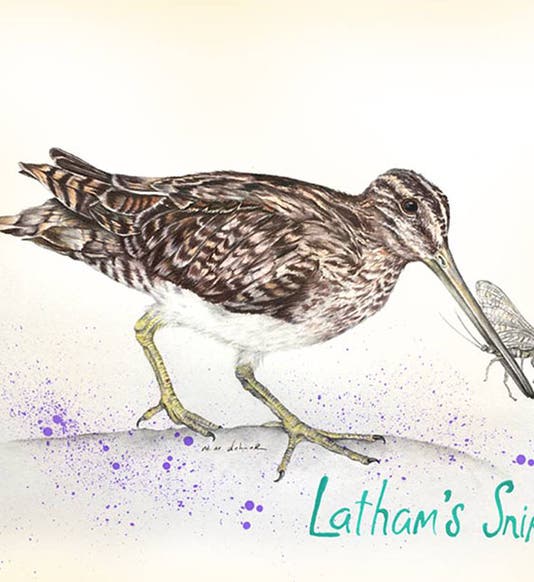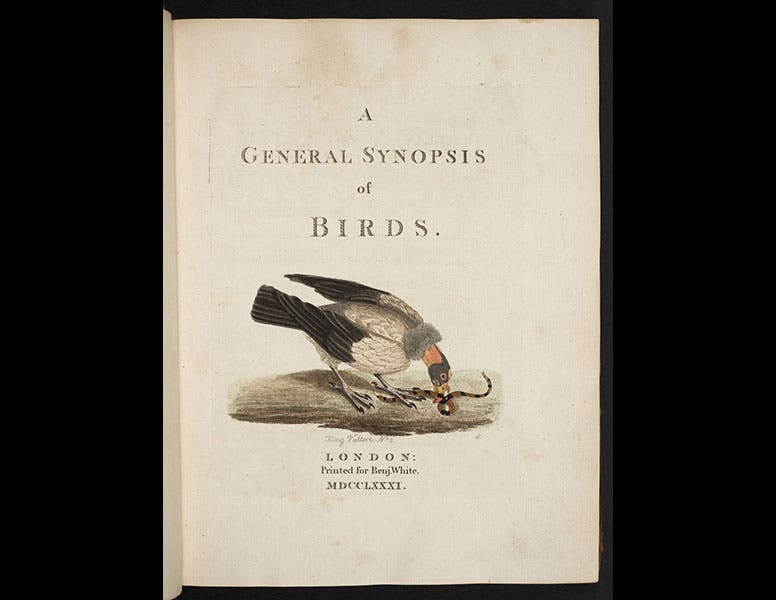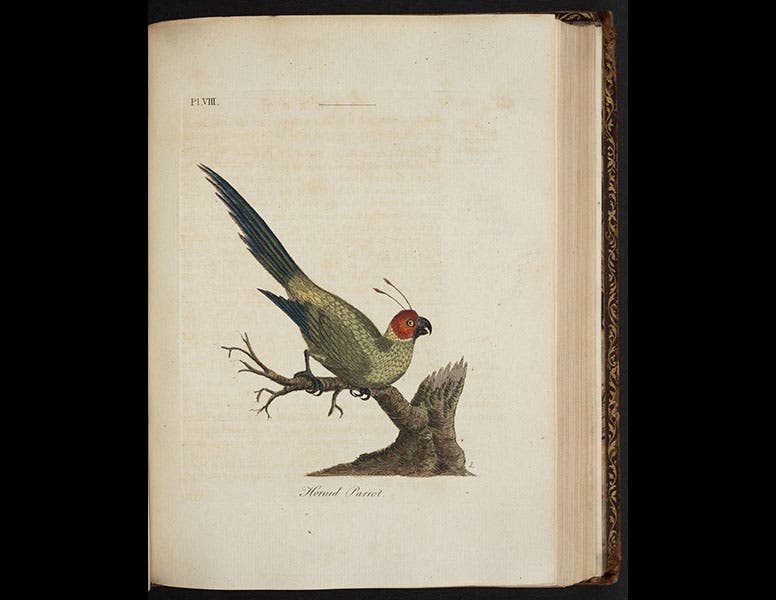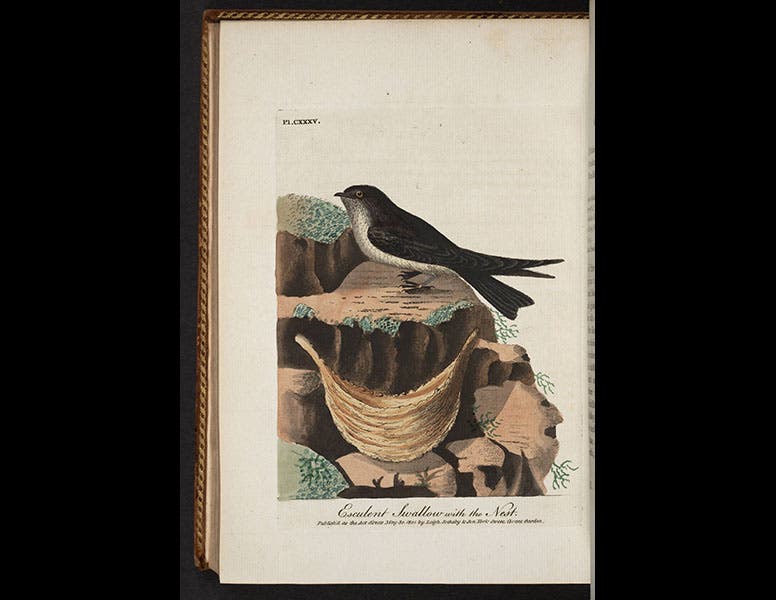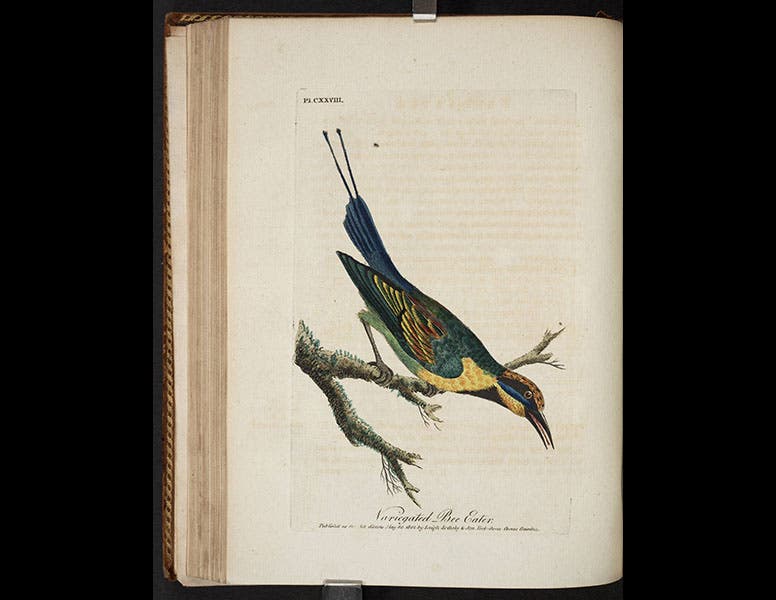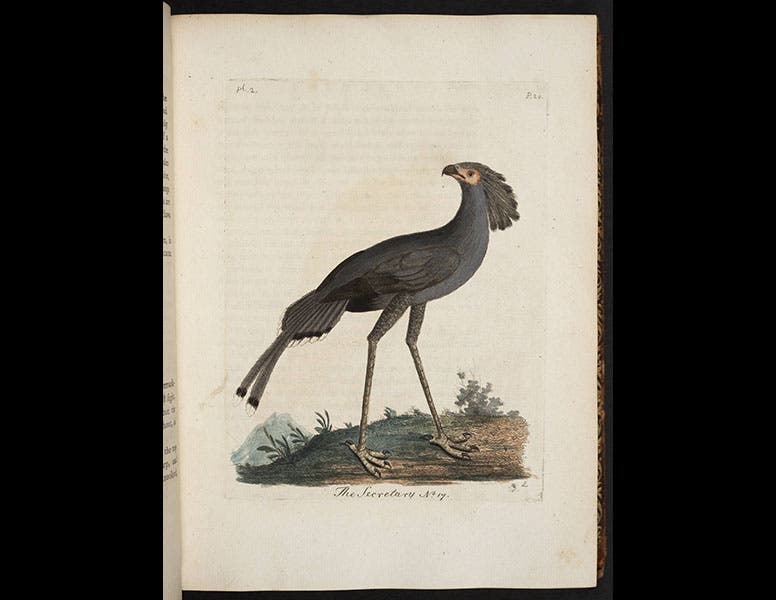Scientist of the Day - John Latham
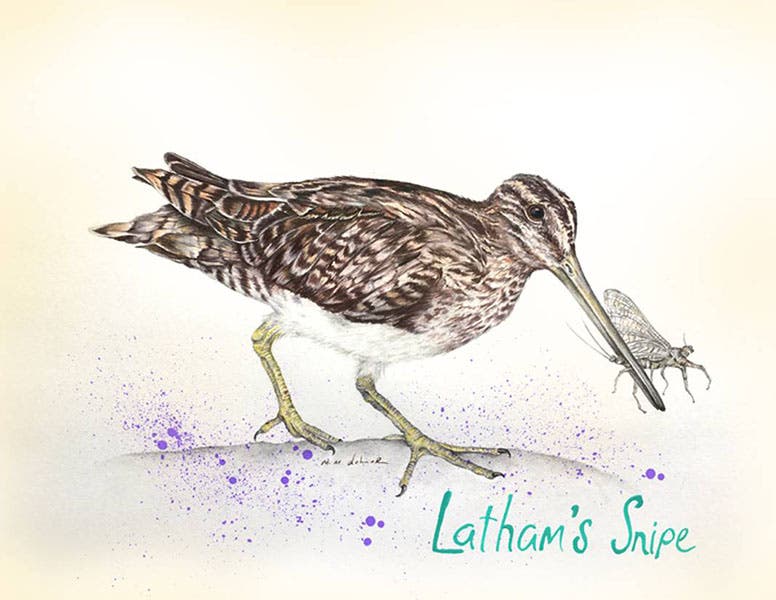
Melissa Dehner
John Latham, an English ornithologist and scientific illustrator, was born June 27, 1740. Latham did not travel much himself, but he was at the right spot at the right time when a boatload of newly discovered birds descended on England, in the form of drawings and skins, the result of Captain Cook’s voyages to Australia and Polynesia (1769-75). In 1781, Latham issued the first volume of his General Synopsis of Birds (second image; that’s a King Vulture on the title page), an undertaking that would keep him occupied for another 6 volumes and 21 years. Many exotic birds, such as the Superb Lyrebird (third image) and the Horned Parakeet (fourth image) were first presented to the public in the pages of these volumes.
When he began, Latham had not yet adopted the Linnaean binomial classification system, preferring to use English names for his birds, and it wasn’t until 1790 that he introduced two-part Latin names. Unfortunately for his legacy, Johann Gmelin, two years earlier, in 1788, had provided Latin names for all of Latham’s birds, and since in taxonomy, priority is everything, many of Latham’s names no longer stand. But many do, such as the Sulfur-crested Cockatoo; if you look up this bird on Wikipedia, you will learn that its scientific name is “Cacatua galerita (Latham, 1790)”, indicating that Latham’s name is the official one. The same is true with the Hyacinth Macaw, the Asian Fairy Blue Bird, the New Holland Honeyeater, and quite a number of others.
One of the most attractive plates in the Synopsis shows what Latham called the Esculent Swallow, and we now call the Edible-nest Swiftlet, the nest of which is the main ingredient of bird’s-nest soup (fifth image). Another colorful etching depicts the Rainbow Bee-Eater (sixth image), and yet another the African Secretary bird (seventh image).
Latham was not a great artist—he was no Edward Lear—but he was more than competent, and he not only drew his own birds, he etched the plates and colored the prints as well. He had phenomenal energy, and in 1821, he launched what was essentially an enlarged edition of his Synopsis, now called the General History of Birds, which we also have in our History of Science Collection. When the first volume came out, he was 81 years old, and he was 88 when the tenth and last volume emerged in 1828. He was still working at his trade when he died in 1837, at age 96.
One bird that Latham did not illustrate was the bird named after him, Latham’s snipe. For a representation, we prevailed on the Library’s resident artist and designer, Melissa Dehner, to provide a pencil sketch (first image). This is the eighth eponymous bird that Melissa has drawn for our Scientist of the Day column. All are quite delightful.
Dr. William B. Ashworth, Jr., Consultant for the History of Science, Linda Hall Library and Associate Professor, Department of History, University of Missouri-Kansas City. Comments or corrections are welcome; please direct to ashworthw@umkc.edu.

